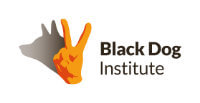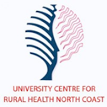About the BRAVE Program
The BRAVE Program is a free online program for the prevention and treatment of anxiety in Australian children and young people aged 3-17, and their parents. The program was developed by a team of researchers from the University of Queensland, Griffith University and the University of Southern Queensland, and has been specially designed to teach young people the skills they need to reduce anxiety and to cope with stressful situations.
Who is the BRAVE Program for?
The BRAVE Program is designed for children and teenagers aged 3-17 years, and their parents.
There are three programs designed to address anxiety in young people. There is a Young Child Program for ages 3-7, a Child Program for 8-12 year olds, and the Teen Program for 12-17 year olds. These programs all also come with accompanying Parent Programs, allowing them to participate alongside their child. This allows parents to enhance their skillset for dealing with anxiety alongside their child!
What services does the BRAVE Program offer?
The BRAVE Program is a collection of programs that are entirely accessible online. These programs aim to help young people. As part of the programs, engage in learning sessions at your own pace, browse helpful resources such as fact sheets, videos and worksheets, as well as Brave Ladders which help your child to break down their fears into more manageable pieces.
Where is the BRAVE Program located?
The BRAVE Program is located in Australia and is only available for Australian residents.
Is there a cost to use the BRAVE Program?
No. The BRAVE Program only requires registration on their site using an email address.
When can the BRAVE Program be accessed?
One of the great things about the BRAVE Program is that it can be accessed at any time that suits you and your child. Visit their website to enroll in the program and you can work your way through it at your own pace.
How to access the BRAVE Program’s services
For the BRAVE Young Child Program (ages 3-7):
- Parental consent is required
- Users must include their age, name, email address, gender, chosen password, suburb location, and whether or not (parent and children) were born in Australia.
For the BRAVE Child Program (ages 8-12):
- Both parent and child consent is required
- Users must include their age, name, email address, gender, chosen password, suburb location, and whether or not (parent and children) were born in Australia.
For the BRAVE Teen Program (ages 12 – 17):
- Parental consent is required for young people up to 15 years
- Users must include their age, name, email address, gender, chosen password, suburb location, and whether or not (parent and young person) were born in Australia.
The BRAVE Program Research and Evaluation
The BRAVE Program has undergone extensive research for over a decade, including a number of Randomised Control Trials and evaluations. There is currently further research being conducted on the efficacy of trans-diagnostic versus specific treatment for children aged 8-17 years with Social Anxiety Disorder.
Research citations:
- Conaughton, R. J., et al. (2017). “Efficacy of an Internet-based CBT program for children with comorbid high functioning autism spectrum disorder and anxiety: A randomised controlled trial.” Journal of Affective Disorders 218: 260-268.
- Donovan, C. L., et al. (2013). Using new technologies to deliver cognitive behaviour therapy with children and adolescents. Cognitive behaviour therapy for children and families., 3rd ed. P. Graham and S. Reynolds. New York, NY, Cambridge University Press: 351-370.
- Donovan, C. L., et al. (2017). “Does an online CBT program for anxiety impact upon sleep problems in anxious youth?” Journal of Clinical Child and Adolescent Psychology 46(2): 211-221.
- March, S., et al. (2014). Internet treatment of youth. The Wiley handbook of anxiety disorders, Volume I: Theory and research; Volume II: Clinical assessment and treatment. P. Emmelkamp and T. Ehring, Wiley-Blackwell: 1297-1309
- March, S., et al. (2018). “Large-scale dissemination of internet-based cognitive behavioral therapy for youth anxiety: Feasibility and acceptability study.” Journal of Medical Internet Research 20(7).
- Moor S, Williman J, Drummond S, Fulton C, Mayes W, Ward N, Dovenberg E, Whitaker C, Stasiak K. ‘E’ therapy in the community: Examination of the uptake and effectiveness of BRAVE (a self-help computer programme for anxiety in children and adolescents) in primary care. Internet Interv. 2019 May 3;18:100249. doi: 10.1016/j.invent.2019.100249. PMID: 31890607; PMCID: PMC6926167.
- Spence, S. H., Donovan, C. L., March, S., Gamble, A., Anderson, R., Prosser, S., . . . Kenardy, J. (2008). Online CBT in the Treatment of Child and Adolescent Anxiety Disorders: Issues in the Development of BRAVE–ONLINE and Two Case Illustrations. Behavioural and Cognitive Psychotherapy, 36(4), 411-430. doi: 10.1017/S135246580800444X
- Spence, S. H., Donovan, C. L., March, S., Gamble, A., Anderson, R. E., Prosser, S., & Kenardy, J. (2011). A randomized controlled trial of online versus clinic-based CBT for adolescent anxiety. Journal of consulting and clinical psychology, 79(5), 629. doi: 10.1037/a0024512
- Stasiak, K., et al. (2018). “Delivering solid treatments on shaky ground: Feasibility study of an online therapy for child anxiety in the aftermath of a natural disaster.” Psychotherapy Research 28(4): 643-653.
- Stephens D, Peterson R, Singer M, Johnson J, Rushing SC, Kelley A. Recruiting and Engaging American Indian and Alaska Native Teens and Young Adults in a SMS Help-Seeking Intervention: Lessons Learned from the BRAVE Study. Int J Environ Res Public Health. 2020 Dec 16;17(24):9437. doi: 10.3390/ijerph17249437. PMID: 33339260; PMCID: PMC7765783.






